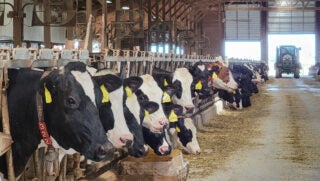World over, the relationship between humans and livestock is fascinating. It’s one that has transcended time and space. Despite all our technological and scientific accomplishments, we fail to replicate their exact contributions in food, clothing, and energy. That’s not to mention all the intangibles that come with intimate human-animal bonds that bless our societies. With various kinds of animals living on a farm, including cattle, pigs, goats, and sheep, there are so many livestock facts out there that it’s a lot to sort through.
But there are seven that really stand out. As if you needed more reasons to appreciate our amazing farm animals, these are things you may not know about livestock:
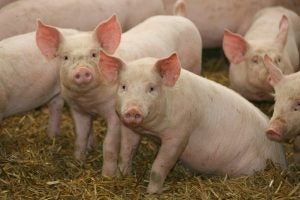
1. Pork is the world’s most consumed meat
Pigs take the crown as leader in global animal protein. Pork comprises over one third of all meat consumed. Why pork? Well, it’s not just because everybody loves bacon.
Historically speaking, pork is a very easy meat to preserve via smoking, curing, or salting. Not only could it keep well before refrigeration, but it also tastes great under various preservation tactics and adaptable to a variety of flavors, spices, and dishes across differing cultures and regions.
With centuries of domestication, pigs have been bred to be master converters of feed to meat with a 74 percent dressing percentage average in the U.S. while being competitively economical. While we’re on the topic — did you know China is the world’s lead pork producer? In 2020 they produced an impressive 41.13 million metric tons of the meat (which equates to almost 91 billion pounds).
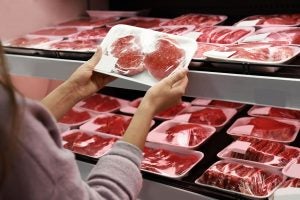
2. Over 68 percent of the world’s protein is derived from animal sources
While the “plant-based” protein trend is popular for the time being, meat is here to stay. Worldwide, over 68 percent of all protein is derived from animal sources. In developing and rich countries alike, livestock animals are the chosen source of protein for a variety of factors — be it culinary preference or necessity.
The fact is, only 11 percent of the Earth’s surface is suitable for crop production. But much of it provides enough for livestock to live off of and convert to usable products such as meat and milk (and so much more).

3. Livestock make than just food products — they also provide byproducts
Speaking of animal products, we haven’t even delved into the secondary means they provide — byproducts. Many people are unaware of just how many everyday products are brought to them thanks to livestock-derived ingredients.
Let’s start with pigs, an incredibly diverse species. Their skin can be found on items such as pursues, their hair can be used for high-end violin strings, and their bones make glycerin that can become antifreeze and explosives. Similarly, beef tallow makes its way into products ranging from lipstick to candles to crayons. (And, of course, let’s not forget leather. Even the classic football “pigskin” is more commonly made of cowhide or vulcanized rubber these days.)
Even “unwanted” bits from animals have an economic value in addition to manufacturing. Poultry industry exports were worth a combined $23.1 billion in 2019 — a sizable chunk of which is made up of heads and feet that are eagerly consumed by other countries.
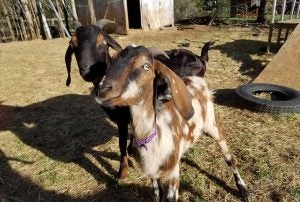
4. Domestication changed the world — and it (probably) began with goats
While they may appear as a “minor” species in most of the developed world, goats are arguably among the most historically significant animals.
Many scholars and archaeologists believe there is strong evidence to suggest that goats were the first animals to be domesticated, followed by sheep. Among the many reasons for this include their ideal size, versatility, and shared habitat with our ancient nomadic ancestors.
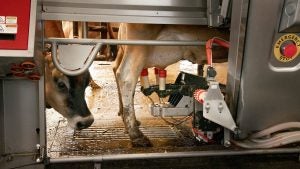
5. Livestock efficiency and welfare has come a long way — and producers are committed to going much further
As with everything, we’ve improved our livestock industry from generations past. But do you know by how much? Here’s some impressive statistics that you might want to note.
- Between 1977 and 2007, each pound of beef produced used 19 percent less feed, 33 percent less land and 12 percent less water.
- Today, producing a gallon of milk requires 90 percent less land and 65 percent less water all with a 63 percent smaller footprint than in 1944.
- Pig farmers have decreased water usage by over 25 percent since 1960.
- Egg production has decreased its carbon footprint by 71 percent since 1960.
And things won’t stop there as the industries continue to invest in research, tools, and methods to continually do better for animal comfort and environmental impact. There are a host of accredited programs producers can enroll in to have an outside source audit them as they reach their goals for animal welfare and sustainability.
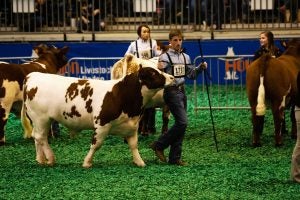
6. Stock showing is a serious sport
Most people associate livestock shows with the classic county fair. While this image is quite appropriate, a lot of people don’t realize that livestock shows are a year-round investment of time and money. It’s a true sport in every sense of the word, with young people and families competing on the local, regional, national and even international levels.
Due to the complexity and diversity of this world, it’s hard to get specific data on attendance and participation. (Naturally, everyone has a different opinion what event is “THE” event of the year.) But one thing we can all agree on is that stock showing is a staple of American history. The famed Forth Worth Stock Show and Rodeo is among the oldest and has been held since 1896.

7. Livestock can be athletic
And don’t think it’s just people having all the fun in the livestock world. Thanks to events like rodeo, animals have the opportunities to be athletes as well. Similar to the stock show, livestock-based sporting events have been an American staple since the late 1800s, featuring “Wild West shows” with the likes of Buffalo Bill, Annie Oakley, and Bill Pickett. From those early days an entire industry has been spawned — and like any major sport, it’s a serious one at that.
For example, good bucking bulls don’t just happen. They take years of careful breeding, training, and management worthy of any other professional athlete. A seasoned, proven bucking bull can be worth half a million dollars. Likewise, the cows who mother these superstars wrack up similar figures. Rodeo horses have a similar story to tell, many of them starting at five figures before winnings are even added in. And those are only some base prices, not factoring in all the massive inputs breeders and stock contractors utilize on a daily basis.
And animals of this type of caliber naturally need special care. A lot of people don’t realize animal sports medicine is a major and practice in itself, extending beyond livestock to things like racehorses and competitive dogs.
If you haven’t taken a moment recently to appreciate how much farm animals bring to our world, we hope these livestock facts have offered some perspective on their contributions. There’s so much more here than just food at stake.
Jaclyn Krymowski is a recent graduate of The Ohio State University with a major in animal industries and minor in agriculture communications. She is an enthusiastic “agvocate,” professional freelance writer, and blogs at the-herdbook.com.


